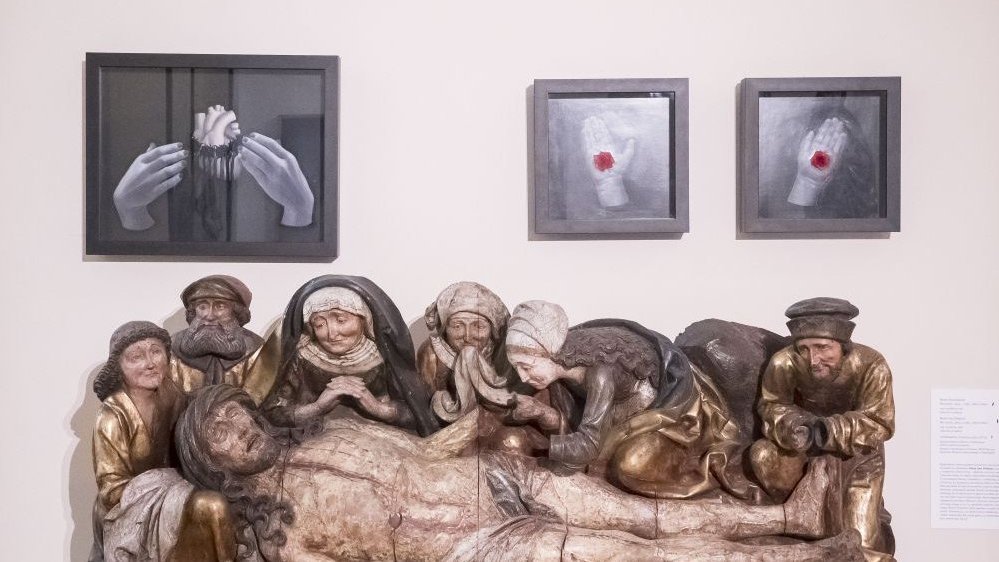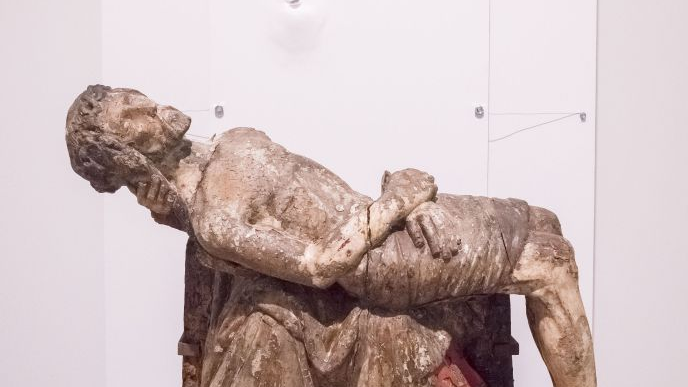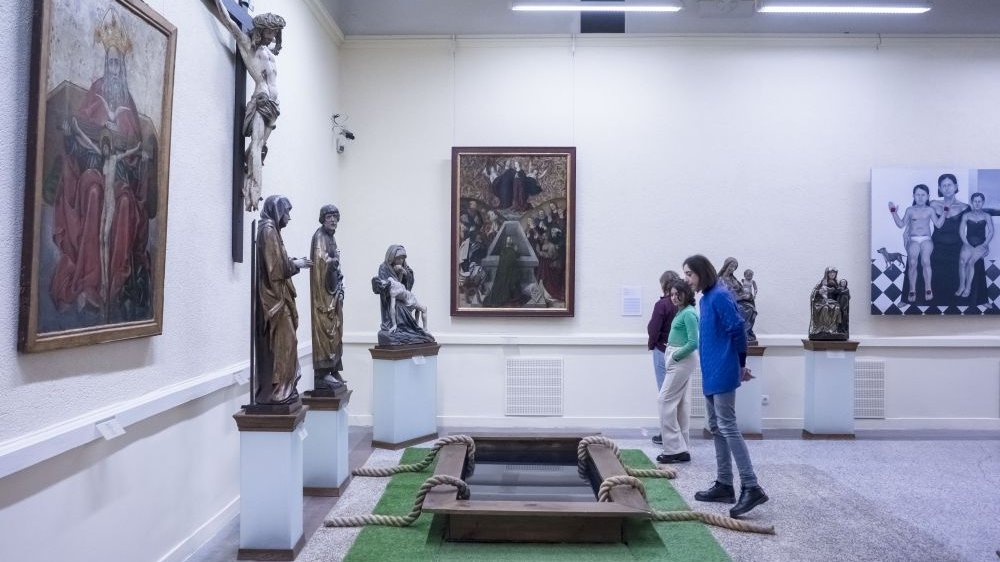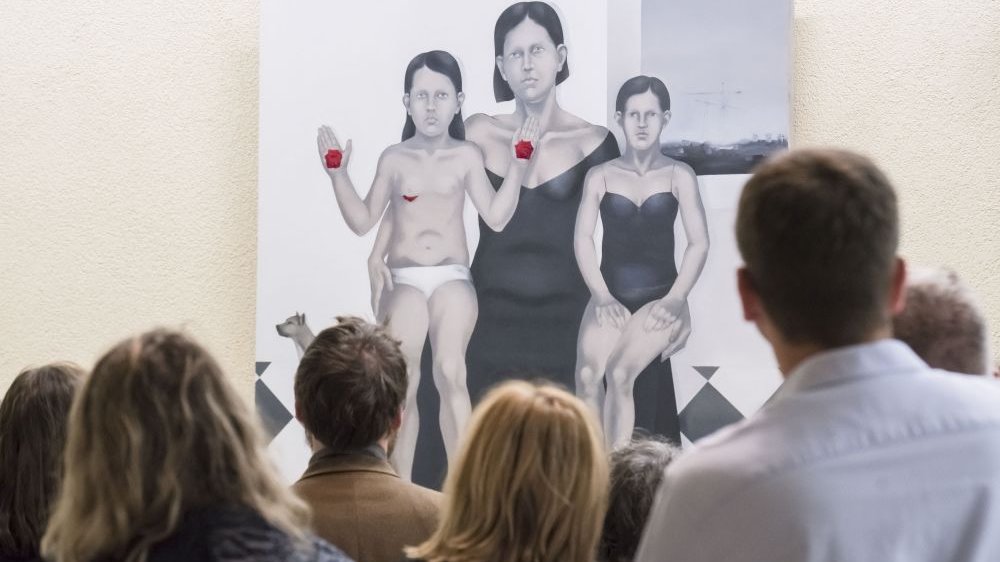Tellers. The (Non)Existent Stories
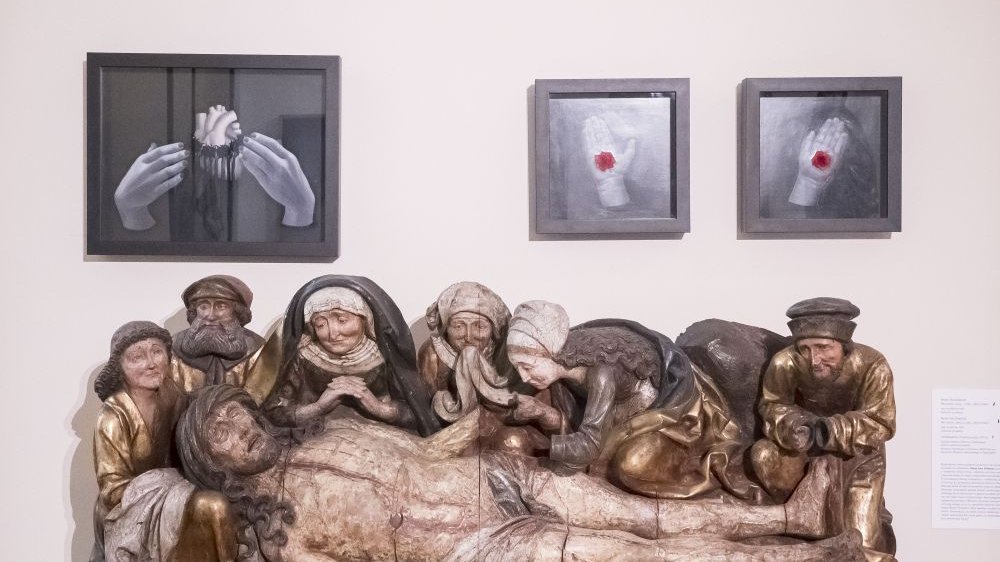
Since last October, the exhibition "Powiadacze" ("Storytellers"). Dialogue Between Contemporary and Medieval Art has been on view in the Medieval Art Gallery of the National Museum of Poznań. Curated by Patrycja Łobodzińska and Katarzyna Sinoracka, the project seeks to breathe new life into medieval works by thrusting them into an entirely new context and seeing them in a whole new light. The works of contemporary artists featured in the exhibition come from the collections of the National Museum of Poznań, the National Museum of Kraków, the Contemporary Art Centre of Toruń and the Magdalena Abakanowicz Poznań University of Fine Arts.
The term powiadacz is archaic Old Polish for "one who speaks or imparts tales" that has survived well into the history of the Polish language. Anyone and anything can become a storyteller. This includes works of medieval art which, emphasise the curators, "have fallen into disuse (...). While on display in the museum, these objects are admired primarily as works of art. They tell old stories, many of which elude the comprehension of a contemporary audience." Stories can also be told by works of contemporary art which, in the Medieval Art Gallery, assume the role of "intruders", not only disrupting the historical order but also influencing its interpretations. While unable to restore medieval objects to their original purposes, the stories have the transformative power to weave new strands of interpretation. Ultimately, it is both the contributing artists and us, the audience, that emerge as storytellers.
The story spun by the storytellers is multi-layered. Despite being billed as a contemporary art exhibition, the project boasts substantially more works of medieval than contemporary art. The former dictate the themes explored by contemporary storytellers, and the range of themes is diverse. However, the curators make sure to provide detailed descriptions of the threads linking individual pieces, a handy guide where connections might not be immediately apparent.
The exhibition explores women's iconography, a central theme in medieval art. A small 16th-century statue of St. Anna (Św. Anna Samotrzeć) is juxtaposed with Beata Ewa Białecka's painting St. Anna II (Samotrzeć II). The medieval sculpture classically portrays a woman embracing children (boys), while Białecka's painting mimics this representation in an almost monochromatic portrayal. Similarly to the sculpture, the painting's classical composition depicts a woman with children (in this case girls) sitting in her lap. The cool hues lend the characters in the painting a ghostly otherworldly quality. One of the girls raises her hands - her hands, feet, and chest bearing embroidered blood-red flowers reminiscent of stigmata. Equally interesting is the meaning of the term samotrzeć in St. Anna's Polish name, which means "alone in three" and places the image within the reflective framework of the loneliness of the modern woman. An extension of sorts on the theme is the foot washing motif. Late 14th-century polychrome images of Saint Mary Magdalene and Saint Barbara are paired with a Feet Washing, Hair Washing (Mary Magdalene) video by Marta Deskur, one of the artist's several works that allude to biblical iconography. Deskur explores the iconography of Mary Magdalene, depicted as a woman washing Jesus' feet and carrying oils to Christ's tomb. Different traditions present her as either "equal to the apostles" or "a reformed sinner". Deskur repeats the gesture attributed to Mary Magdalene, as she washes other people's feet using her hair, which is also a reference to the traditional representation of a saint. The artist puts this act in a different context, emphasising its sensuality and reflecting on what it means to be a woman not only for the woman herself, but also for society at large and for cultural patterns.
Another storytelling juxtaposition of great interest to me is that of a 15th-century Pietà with the site-specific installation "Beksa" by Aga Garbara. The damaged Pietà, displaying only the legs and hand of the Virgin Mary supporting the head of Jesus, is complemented by an installation resembling a canvas "stretched" over a larger canvas by means of fishing line. Both are white, although the former features a bulge, a quasi-relief representing parts of the face and an eye. The eye socket is not empty and holds a white eye, its closed eyelids covering a colourless, absent gaze. A tear that above the lower eyelid does not roll and becomes solid. The eye occupies the site where the Virgin Mary once stood. This makes "Beksa" complement the damaged sculpture in a formal and interpretive way all the while highlighting what is missing. But what actually is it that is missing?
The above works are just a few of the dialogues proposed by the exhibition curators. Each of them is highly interesting, opens up new areas for interpretation and opportunities to create brand-new stories. Other storytellers include Aleksanda Ska, Kaja Koster, Dawid Marszewski, Ewa Kuryluk, Magda Moskwa, Paulina Misiak, Natalia LL, Agnieszka Brzeżańska and Robert Bartel.
The exhibition's design shows that a project can come alive by engaging with the world around us, which in this case is the museum's contemporary art collection. And although "Storytellers" does not fit the mould of a political or feminist display, the context of the works on view in the Medieval Art Gallery speaks volumes. Not always immediately apparent, the context subtly alludes to transience, loss, feminism, environmental degradation, and politics. In fact, the list of themes at the exhibition goes on and on, many of them not coming to the fore immediately and instead waiting for reflections to consolidate. In their curatorial outline, Łobodzińska and Sinoracka use the phrase "exhibition space-time". I think that it is this "space-time" that makes us transport the characters and objects from the past to the unspecified space-time of art. And what do the storytellers talk about? Not the past or the future, but all those things that are being created and are yet to unfold.
Klaudia Strzyżewska
translation: Krzysztof Kotkowski
- Exhibition: Storytellers. Dialogue Between Contemporary and Medieval Art
- National Museum
- Open until 7 April 2024
- Tickets: PLN 8-12
© Wydawnictwo Miejskie Posnania 2024
See more

Waltzes, jazz songs and carols

From One Celebration to Another

Christmas Markets and Fairs with Attractions

